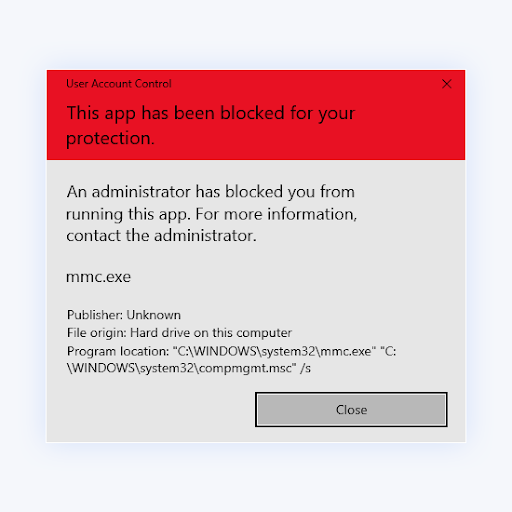Difference between Office 2013 and 2016

What is Microsoft Office?
Before we begin examining the different releases and editions of Office, it is important that we know what exactly it is.
Microsoft Office is a suite of different applications from Microsoft, all of which are either useful in both professional environments as well as personal use or focus more on business-related tasks for enterprises, as well as large to small-sized businesses.
The Office suite comes in many different editions and versions, all of which offer different things, thus making Office appeal to a much larger audience due to the variety of options provided.
There are three classic Office applications that can be found in each and every edition: Word, Excel, and PowerPoint; though everything beyond these memorable and beloved applications is additionally really useful.
Depending on the type of Microsoft Office you purchase, you can gain access to applications such as
- Outlook which allows you to manage your personal life and e-mails,
- OneNote to keep track of your notes in an organized manner with the additional capability to use digital inking tools to draw, handwrite or mark important parts of a note
- Microsoft Publisher and Microsoft Access, both PC exclusive software but are parts of the Office suite nonetheless.
You also have the option to acquire the Skype for Business service or use the compact online versions of various Office applications, that allow you to work with your documents on the go from basically any device and platform as long as you have access to your Microsoft account, and a connection to the internet.
Key differences Between Office 2013 and Office 2016
As opposed to Office Office 2013, Office 2016 has capabilities that enhance your ability to work in teams.
This brings you and your colleagues, family, friends, or group together and allows you to experience working alongside each other, even from entirely different locations.
While Office 2013 already has a basic co-authoring feature that allows you to edit files in parallel, Office 2016 takes it to the next level, especially in Word, where you are able to see the changes and typing of who you are working with, in real-time.
Thanks to the integration of Skype, you can now instant message, share your screen, talk or start a video chat right from your docs, without having to even leave Office. Skype Meetings are also available in both Office 2013 and Office 2016.
If you are a person who needs access to their Office documents at any given time, the upgrade to Office 2016 is definitely something for you to consider.
You can access Office anywhere with a set of Office mobile applications, that allows you to access and work with your files on the go, straight from your mobile device.
These are available on Android, iOS, and Windows devices. These Office Mobile applications are touch-friendly, work efficiently, and are all optimized for your device.
Windows 10 users can see a number of improvements and new features in Office 2016 as well.
While Office 2013 does work perfectly on Windows 10 and even has a built-in OneDrive storage, it lacks in other departments when it comes to the experience of working with Office.
In Office 2016, you have the ability to use Cortana and perform useful tasks like prepping a meeting, or accessing and searching your files.
The security of your files is one, if not the most important thing that you should be looking into when deciding on which version of Office you desire to purchase.
While you can encrypt your Word, Excel, PowerPoint, and Outlook data in Office 2013, you don't have access to Visio data encryption, nor the Data Loss Prevention feature which can drastically reduce the likelihood of your information getting leaked.
Additionally, Multi-factor Authentication is also available in Office 2016.
Click-to-Run options are only available in Office 2016, and they are extremely useful for IT Admins. The deferred updates let you decide when you want to update, either once a month or every three months.
You can also validate up to four months prior to the deployment of Office 2016. The integration with System Center Configuration Manager has been improved to be more efficient when it comes to the distribution of updates.
A new feature called Background Intelligence Transfer Service (BITS) can provide you with much better network traffic management, and the simplified activation management tools add new controls into Office 365 Admin Portal, which lets the admins manage device activations across users.
Applications
Office 2013 is an earlier release, some of the key differences can be pinpointed as the improvements and alterations Microsoft made to Office 2016 and the applications found within it.
As always, each application found in the suite received an update, which means new features, changes to already existing ones, design overhauls, and overall quality changes that allow users to work more efficiently with ease.
We will be going through the applications and list each change that can be found between the Office 2013 and Office 2016 versions.
Microsoft Outlook
Microsoft made it possible to attach files from cloud storage locations such as One Drive, instead of having to open your browser and locate the file through a long process, you can easily do it right from Outlook's menu - you do not even need to download the file to your computer.
You may notice a new color theme and small tweaks to the overall design of Outlook.
Some icons and fonts have been tweaked, the ribbon has seen some small changes as well, and there is now an entirely new feature called “Tell me what to do” which can also be located from the ribbon itself.
The new lightbulb icon indicates this feature, and it is not only a replacement for the Help field but a lot more.
When you type something in this field, you are actually performing a search through Outlook’s list of commands, buttons, and tools, and you can quickly use them right from the results. You can also open the regular Help link from here if you need to access it.
There is also support for tablets, meaning that Outlook is way more accessible on tablet devices due to the responsive design that changes based on the way a tablet is rotated.
You can switch between Landscape and Portrait mode manually as well, which Outlook keeps and remembers the next time you use it, meaning that the need to manually resize all your panels is eliminated.
Office 365 group support has arrived as well. This is basically a shared mailbox to which you can become a subscriber, or create and manage your own.
Additionally, this also provides a calendar and a shared storage location that can be accessed via One Drive for Business.
Unlike in Office 2013 where you would have to use Outlook Online, you can create, join, and manage Office 365 groups right from within Outlook itself.
Another improvement is a feature that is related to spam e-mail you are most likely to ignore, called Clutter support.
It automatically detects incoming e-mails that are potentially messages you would not want to see in your main inbox and moves them into a separate one, where you can still check and access them, but they would not take up a tremendous amount of space in your inbox.
This makes it easier to filter your important e-mails and have a much more clear view of your ongoing messaging.
Microsoft Word
Accessibility is better than ever when it comes to Office 2016’s version of Word. You can easily edit your documents with the help of learning tools.
The changes are visual effects only, meaning that the original documents will not be affected and will still be saved and printed in their original views.
You can also enable sounds to indicate different things and thus further improve the accessibility of Word. These sound effects, or audio cues, are able to guide you and improve your productivity as well.
While on the topic of visual effects, it has been made possible to work with 3D models better.
When you insert a 3D model into your Word document, you have the ability to see the model from all angles, as opposed to having only a few options to choose from.
This adds a great amount of visual interest to your documents and allows you to let your creative side explore more possibilities as well.
Microsoft Excel
Excel is without a doubt one of the most famous Microsoft applications due to its wide variety of capabilities that are useful to an equally large variety of people.
However, there can always be improvements as no application can ever be entirely perfect. Other than the obviously new features such as the Tell Me to search and Smart Lookup, Excel has been worked on to provide more for every one of its users.
The integration of Get & Transform, 3D Maps, and Power Pivot makes it a whole lot easier to use and access these features as opposed to the non-integrated versions found in Office 2013.
If you want to know more about differences in Office 2010, 2013, 2016, and 2019 you may find our guide "Microsoft Office Comparison" useful.









